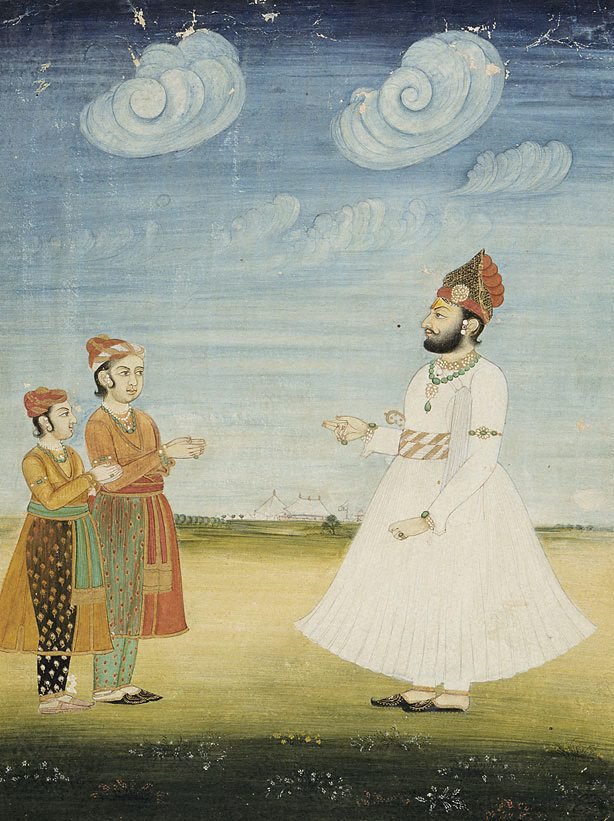-
Details
- Other Title
- The Maharaja Jaget Singh with his sons
- Place where the work was made
-
Jaipur
→
Rajasthan
→
India
- Period
- Rajput circa 1500 - 1947 → India
- Date
- 19th century
- Media categories
- Miniature , Painting , Watercolour
- Materials used
- opaque watercolour with gold on paper
- Dimensions
- 22.7 x 17.2 cm image; 27.4 x 21.2 cm sheet
- Signature & date
Not signed. Not dated.
- Credit
- Bequest of Mr J. Kitto 1986
- Location
- Not on display
- Accession number
- 129.1986
- Copyright
- Share
-
-
About
Portraits of the royal ruler and his associates were among the most popular of all Indian painting commissions. Under Mughal patronage, realistic portraits were preferred. However, they did not show concern for the effects of light and shade and instead emphasised the features of the face and clothing through detailed brush work.
Once the outward form and the accompanying pictorial motifs, like a sword or a book used to indicate the ruler’s attributes, triumphs or character were established by a master they were copied by others thus establishing a convention and an easily recognisable portrait of the ruler. In this way portraits of nobility and courtiers were made within an established set of standard compositions. These forms even survived into the Company School patronised by the British rulers and officers of the East India Company.
For instance, portraits set in the palace usually show the ruler against a plain background, standing looking out from a window, separated from his subjects, or relaxing seated against a bolster on a mat, maybe even smoking a hookah. In outdoor setting he might be seen mounted on a horse or elephant leading the hunt or battle as a sign of his power and leadership, or seated with a lover, holding a flower as a sign of his cultured and sensitive nature.
-
Places
Where the work was made
Jaipur
